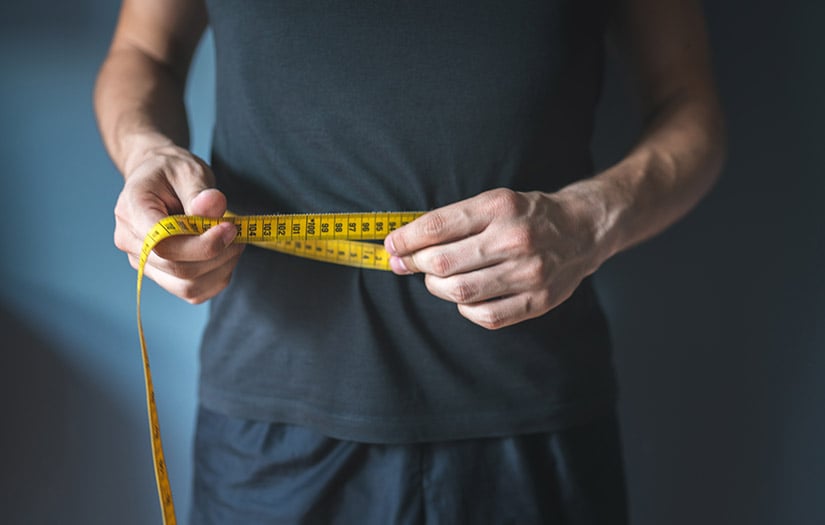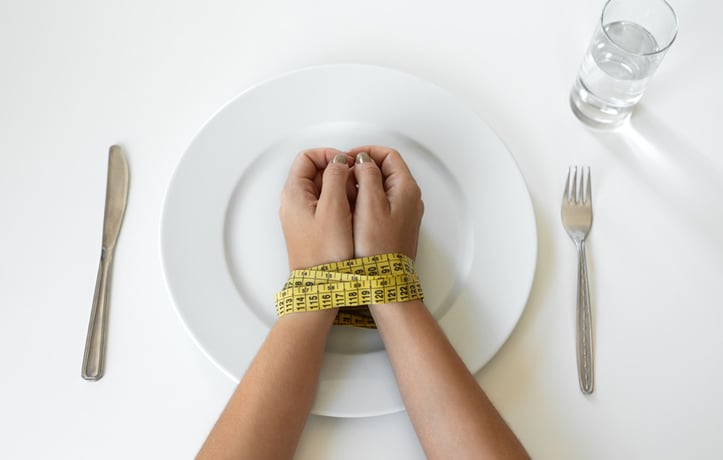You may have heard that abs are built in the kitchen. While this is partially true, it's not the full story. While a healthy dose of body fat is a sign of overall health and wellness, body fat ought to be evenly distributed (and not just in certain areas e.g. love handles). This is how a disproportionate amount of belly fat is not ideal and certainly not healthy.This post intends to provide a holistic approach towards losing unwanted belly fat. It is a lifestyle change requiring incremental changes over time.
Let's begin with ten ways to lose belly fat. If you need tools to help measure calories, BMI, or body fat percentage, follow the links for helpful calculators.
10 Ways to Lose Belly Fat
- Limit Unwanted and Unnecessary Stress
- Eat Your Greens and Lean Proteins
- Fast After Dinner
- Don't Eat High-Sugar Foods Before Bed Time
- Exercise for More Than 30 Minutes in The Morning
- Sweat or Shiver it Out
- Drink Plenty of Water
- Get 8 Hours of Quality Sleep
- Limit Alcohol
- Beware of The Dangers of Shift Work
1. Limit unwanted and unnecessary stress
Prolonged stress leads to a prolonged sympathetic nervous system response. While short-acting sympathetic responses are fuel burning, long-term activation of the sympathetic nervous system has the opposite physiological impact.
The body becomes conditioned to save rather than burn energy reserves in anticipation of excessive use later. Thus, limiting stress is the first line of defense against belly fat.
Read more: The Symptoms and Causes of Stress
2. Eat your greens and lean proteins
Diet does indeed influence belly fat ratios. Diets that are nutrient-dense consisting of leafy greens, lean proteins, and light carbohydrates promote proper refueling and healthy digestion.
Foods that are high in fat and sugar improperly signal the release of glucose and insulin into the blood leading to a stress response. This physiological cascade increases the likelihood of belly fat.
3. Fast after dinner
Research shows that intermittent fasting - going > 10 h without food - can help promote lipolysis; the physiological event of burning fats as an energy source. Catalyzing lipolysis when done properly can limit belly fat.
See also: Intermittent Fasting for Weight Loss
4. Don't eat high-sugar foods before bedtime
Although like number 3, intermittent fasting is not for everyone. If you must eat after dinner, opt for foods low on the glycemic index. It will also ensure that you are setting yourself up for quality sleep.
5. Exercise for > 30 minutes in the morning.
Whether with or without fasting, exercising for more than 30 minutes in the morning promotes lipolysis. While short-burst and heavyweight training recruits and targets glycogen reserves, long-burst and lightweight training recruits and targets fat reserves.
You might be interested: Core Stability Exercises (for ab exercise ideas)
6. Sweat or shiver it out
Intermittent exposure to extreme heat and cold promotes the release of healing factors and can reduce sympathetic responses in the long term. Because it takes the body additional time to cool down after a 45-minute sauna session or 3 minutes a cryotherapy session, additional calories are burned.
7. Drink plenty of water
This is a critical point. Although it seems paradoxical to drink water to lose belly fat, being dehydrated is extremely stressful leading to a full-blown stress response thus leading to the tendency to store fat.
8. Get 8 hours of quality sleep
Several lines of research have shown that lack of sleep contributes to belly fat. Having at least 8 hours of non-interrupted and restorative sleep sends the body into an ultimate mode of healing and overall health.
Check this resource out: The Importance of Sleep and Recovery
9. Limit alcohol
A nightcap may help you sleep but it will also promote the retention of belly fat. Alcohol contains unique sugars and enzymes that lead to fat retention, particularly around the belly.
10. Beware of the dangers of shift work
Shift work has the greatest impact on metabolic health. The #1 complaint of night shift work is an inability to manage weight and inability to lose belly fat. If you can't avoid night shift work, it is an absolute must to follow the rest.
Routine for Losing Belly Fat
Now let's outline this on a time-by-time basis focusing specifically on someone with normal working hours:
Early morning (0600-ish)
Drink > 8 ounces of water. Have coffee. Although not mentioned prior, coffee promotes lipolysis as long as you are having it black without cream or sugar. You can also opt for "caveman coffee" which has a healthy dose of fat and clarified butter, which collectively promotes ketogenesis.
o Exercise for 30 minutes. Exercise can be walking the dog (a great way to recruit and activate the core and upper body muscles!), hopping on the Peloton, or heading to the gym for some circuit training. Whatever you chose, you will be engaging in lipolysis in the process.
o Make sure to consume > 8 oz. of water throughout and especially after exercise.
Mid-morning (0900-ish)
If you can sneak in a 45-minute sauna session after training, awesome. If not, maybe hit up a cryotherapy studio over lunch or after work.
o Have another cup of black coffee and eat a well-balanced breakfast of leafy greens, lean proteins, and light carbohydrates.
o Consume > 8 oz. of water.
o Try a stand-up desk at work. Research studies have shown that stand-up desks can contribute to better posture, activation of the core muscles, and increases in basal metabolic rate leading to more opportunities for lipolysis.
o Exercise for 30 minutes. Exercise can be walking the dog (a great way to recruit and activate the core and upper body muscles!), hopping on the Peloton, doing planks, or heading to the gym for some circuit training. Whatever you chose, you will be engaging in lipolysis in the process.
o Make sure to consume > 8 oz. of water throughout and especially after exercise.
Lunchtime (1200-ish)
Go on a brisk walk just to improve your headspace and continue catalyzing metabolic pathways that promote lipolysis.
o Have a final cup of black coffee for the day and eat another well-balanced lunch of leafy greens, lean proteins, and light carbohydrates.
o Consume > 8 oz. of water.
Mid-afternoon (1600-ish)
Take the dog on another walk to again decompress from your workday and continue to burn fuel and fats engaging in what we call non-exercise activity thermogenesis.
o Consume > 8 oz. of water.
• Dinner time (1900ish) - Eat a final well-balanced meal of leafy greens, lean protein, and light carbohydrates that can hold you off for the entire night.
o Consume > 8 oz. of water.
Pre-bedtime (2100-ish)
Take the dog on a final nighttime walk before initiating a stable sleep routine. Having a sleep routine that consists of winding down mentally is the most beneficial tip for restorative nighttime sleep. If you must have a snack, opt for something low on the glycemic index.
Even a glass of warm milk is sufficient and can promote sleep. This is not an old wives' tale but true that unique proteins found in milk promote sleep.
o Consume > 8 oz. of water.
o Get at least 8 hours in a dark, cool, and quiet room
To conclude, losing belly fat is a process. You can do all the things or a few of the things. The bottom line is to be consistent and mindful with your habits and eat and exercise in ways that you find enjoyable and not punishment!
















